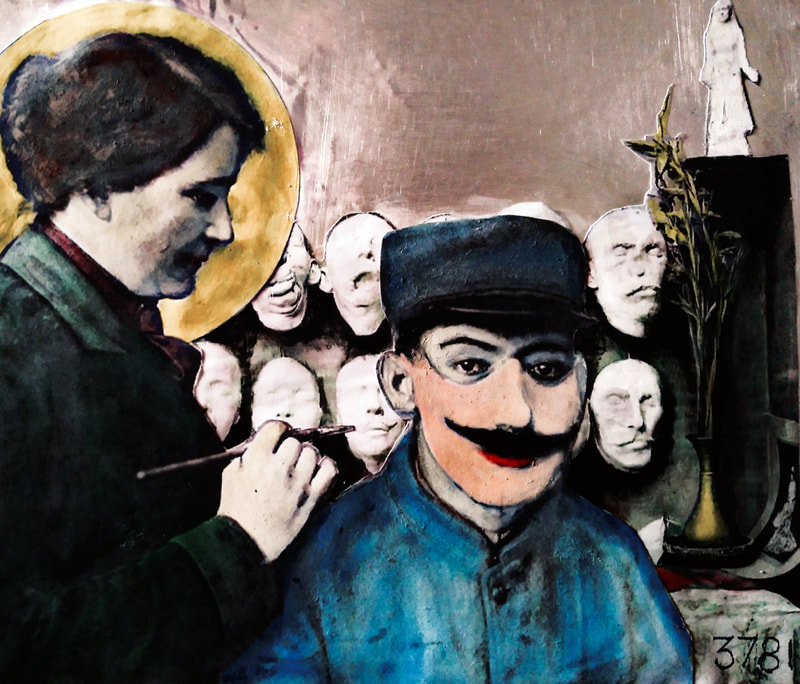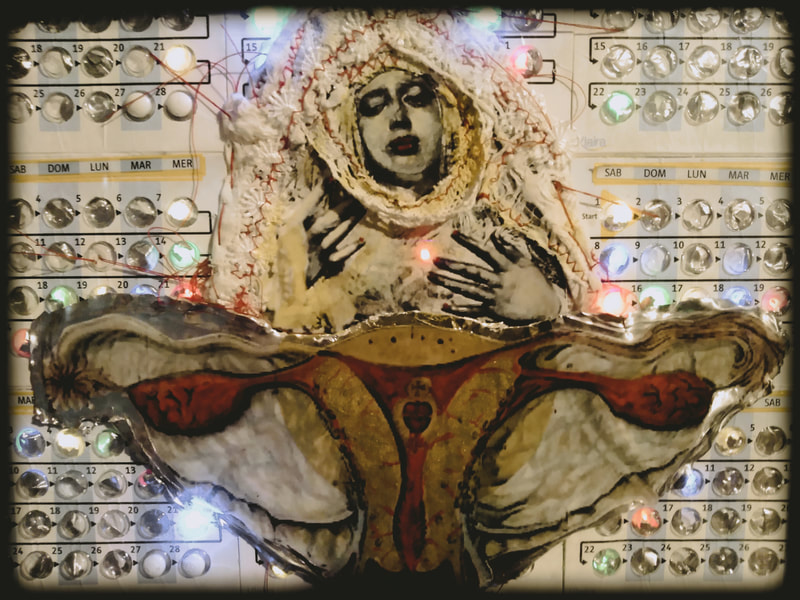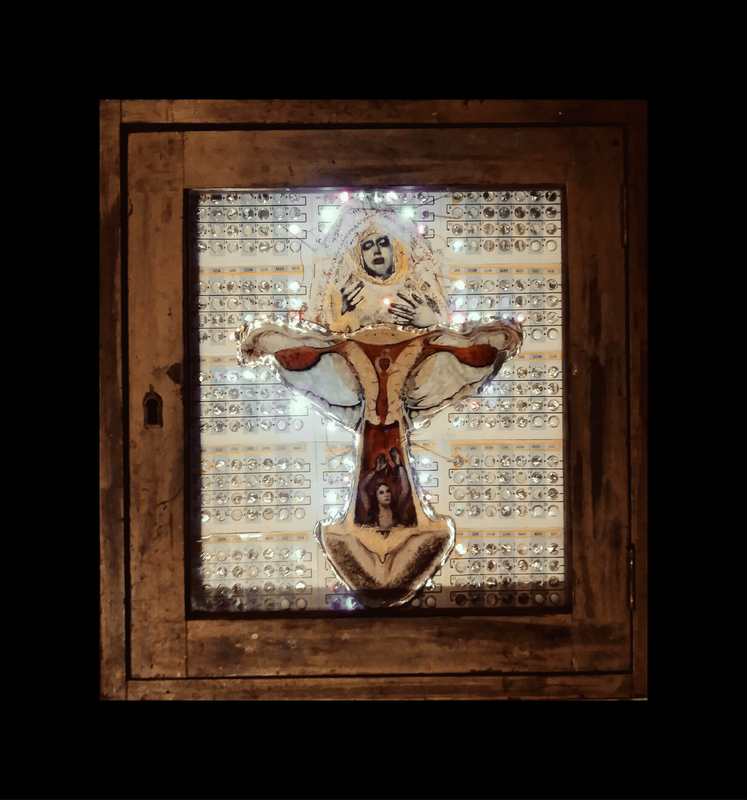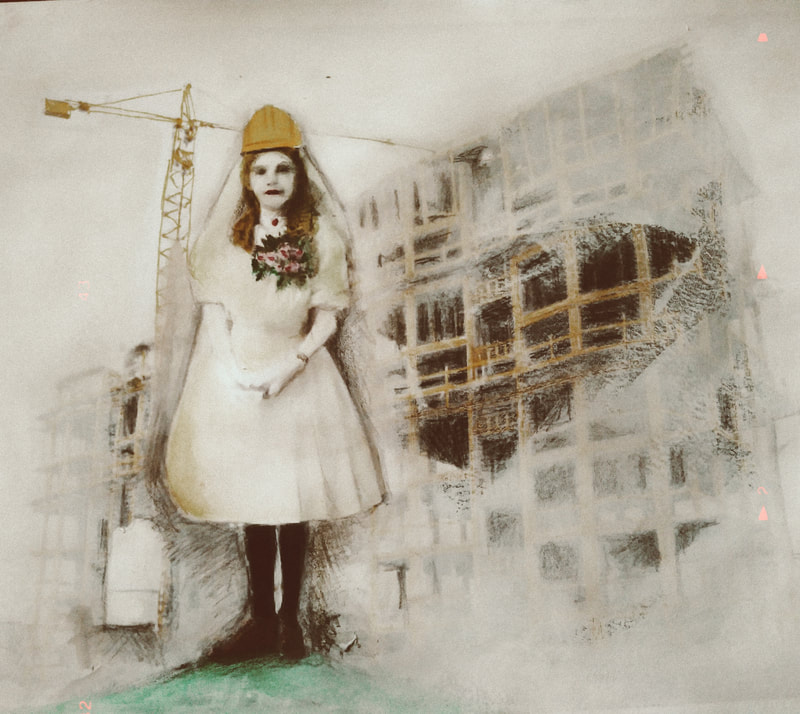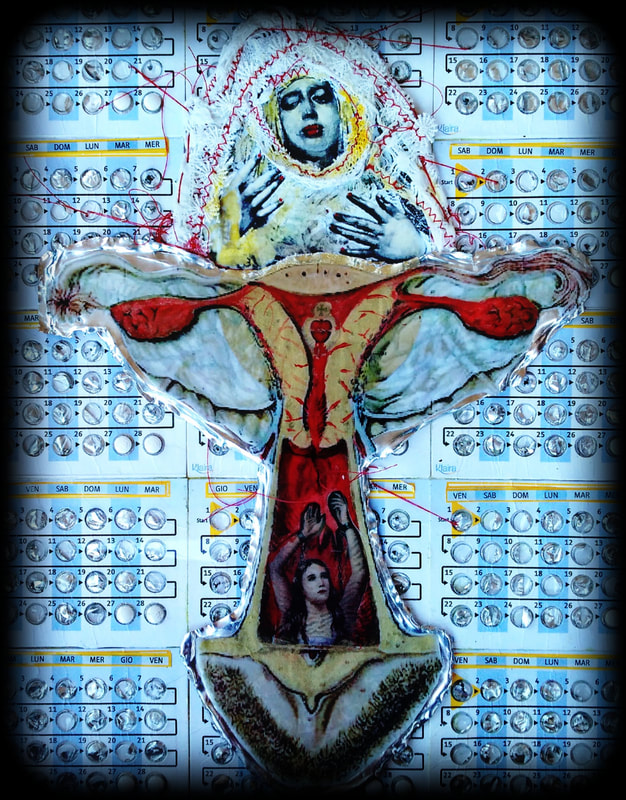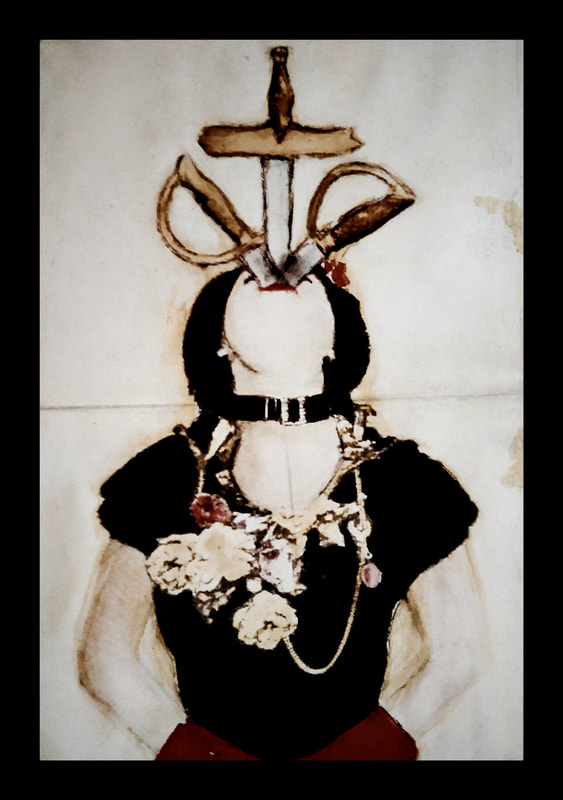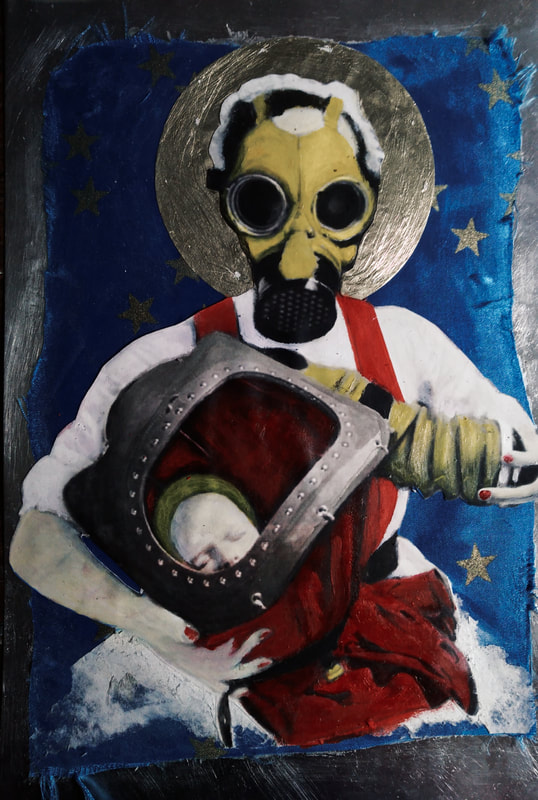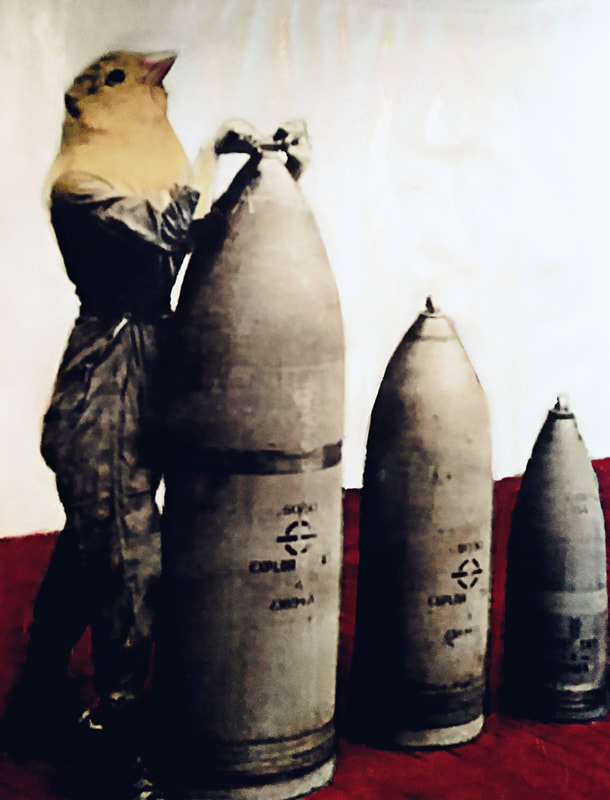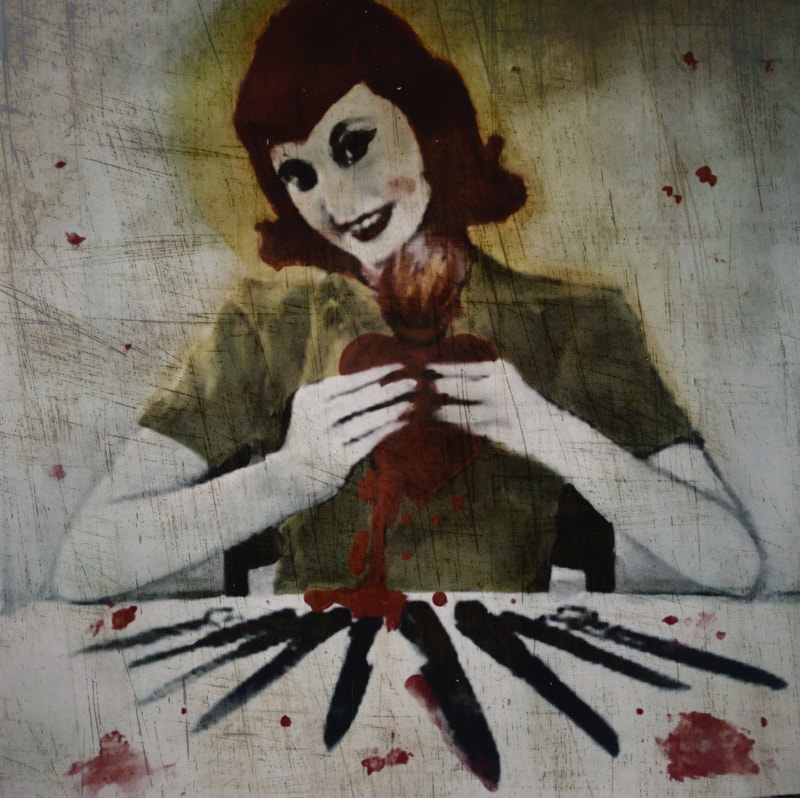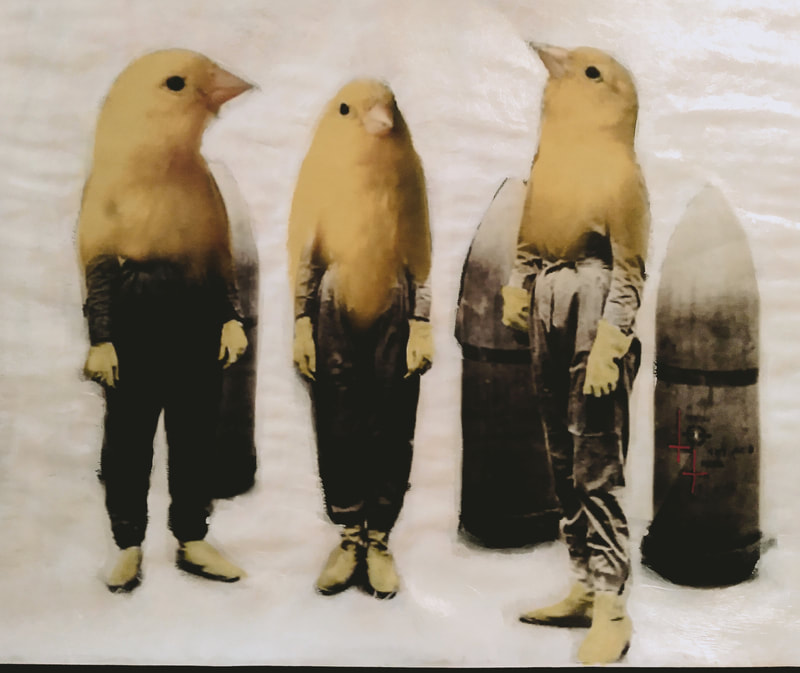Per grazia non ricevuta
Giovanna Maria Boscani
|
Giovanna Maria Boscani, detta Zuanna, è un’artista eclettica che arriva dall’assolata terra di Sardegna con un bagaglio gigantesco di storie da raccontare. Dopo il diploma all’Accademia di Belle Arti inizia la sua ricerca artistica che si sviluppa a partire dalle figure delle Sante, “le prime femministe della storia, che hanno accettato il martirio pur di non andare contro i propri ideali” dice Zuanna. La storia personale diventa universale in “C’eravamo tanto A(r)mati”, acrilico su carta del 2022, che fa riflettere sulla violenza di genere in primis ma sulla violenza domestica in generale. “Dialogo tra vagine” ci parla del grande tabù della sessualità femminile, che ha dato vita nei secoli passati ai processi per stregoneria. Ancora di sessualità si parla in “La cura”, dove il tema trattato è legato al problema poco conosciuto ancora dell’endometriosi, malattia fortemente invalidante. “La sindrome della crocerossina” appartiene a buona parte dell’universo femminile, mentre più personale è “La figlia del costruttore”, che Zuanna dedica al padre. In tutto il percorso artistico di Boscani si ritrova una sorta di laica religiosità, come a voler dire che i santi siamo noi, la gente comune che vive nel mondo con i suoi problemi e le sue disgrazie. Una sorta di denuncia, quindi, verso i mali della società, in primis la guerra. L’artista propone una serie di lavori che riguardano il conflitto bellico che non sono solo di denuncia, ma anche esplicative di fatti poco conosciuti. “Canary Girls”, elaborazione grafico-pittorica del 2022, tratta il tema delle cosiddette “ragazze canarino”, che nella Prima Guerra Mondiale lavoravano nella produzione di munizioni. La loro pelle diventava di un giallo intenso a causa delle sostanze chimiche a cui si esponevano. Ancora un fatto storico è raccontato da “Storie d’amore, vendetta e rivoluzione” (2022). Nel dipinto è raffigurata Anna Coleman Ladd mentre si occupa della cura estetica di un soldato che ha subito un grave danno al viso durante la battaglia. La religiosità ritorna, invece, in “Ma-Donna con bambino”, un grido d’orrore verso le madri colpite dalla guerra e i loro figli, vittime innocenti. a cura di ELISA BOZZI
|
